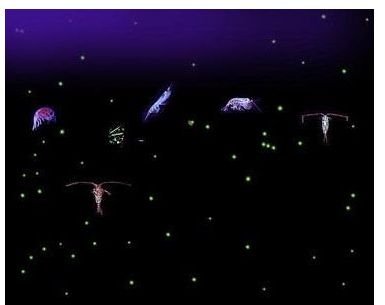Exploring the Marine Phytoplankton Cycle and Its Purpose in Our Oceans
Different Types of Marine Plankton
Plankton got their name from the Greek word “planktos”, which means to wander or to drift. Unlike ocean nekton or free swimming organisms, plankton have limited means of motility and are transported about by ocean currents.

Marine plankton can be divided into two major groups depending on whether they are plants or animals. The plants are known as phytoplankton (phyton = plant), while the animals are known as zooplankton (zoon = animal). These groups can be further classified according to size. The smallest plankton (bacteria) are called picoplankton, followed by nanoplankton (small flagellates), and microplankton (diatoms and dinoflagellates), the category into which most phytoplankton fall. Zooplankton, which feed on phytoplankton or other zooplankton, are larger in size, ranging from microplankton (herbivorous protozoa), mesoplankton and macroplankton (herbivorous zooplankton and carnivorous crustaceans) to megaplankton (krill and jellyfish), all of which drift around on ocean currents.
Trophic Levels
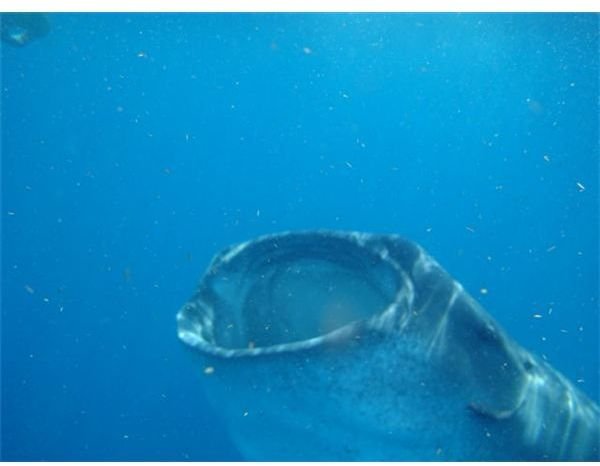
Phytoplankton are the primary producers of the oceans, forming the base of complex pelagic marine food webs. They are autotrophic organisms that possess chlorophyll, enabling them to use sunlight to convert inorganic material to organic material through the process of photosynthesis. Like all plant cells, phytoplankton have three major requirements for growth - namely sunlight, carbon dioxide, and nutrients in the form of nitrates and phosphates. They obtain their nutrients directly from the nutrients dissolved in sea water and utilize the energy from sunlight to produce carbohydrates. Thus, as primary producers, phytoplankton are limited to the upper euphotic zone of the ocean that receives light from the sun. Secondary production occurs when phytoplankton are fed on by herbivorous zooplankton who convert the plant material into animal tissue in the next step up the food chain, and tertiary production occurs when carnivorous zooplankton, or other planktivores, such as fish, whale sharks or baleen whales, feed on zooplankton.
Seasonal Plankton Cycle: Productivity, Grazing & Vertical Mixing
Phytoplankton production follows seasonal cycles that differ according to geographical regions. As phytoplankton production is largely determined by nutrient availability, wind action plays an important role in primary production in the oceans, as it not only mixes surface waters with deeper nutrient rich waters, but also influences distribution of phytoplankton, which are carried in currents produced by strong wind action.
Phytoplankton Cycle
In the north Atlantic ocean, strong winter winds mix the surface waters with deeper nutrient rich waters, destroying the thermocline and bringing nutrients up to the euphotic zone. In spring phytoplankton flourish due to the availability of nutrients and the increase in sunlight. In summer the winds are weaker, allowing phytoplankton to take full advantage of the available light and nutrients, which they rapidly deplete. The nutrients are not replenished from below as the winds are weak, and mixing is minimal, and the reduction in nutrient availability eventually
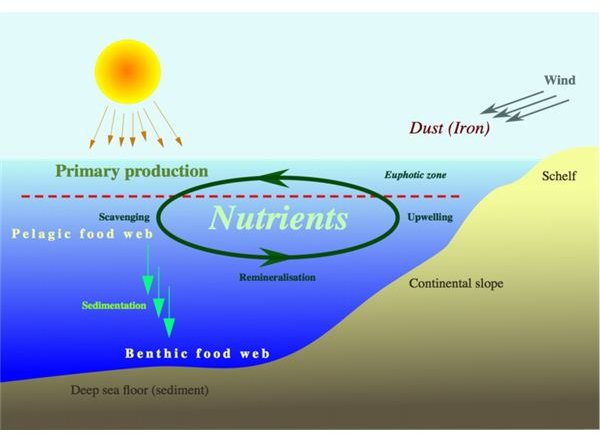
inhibits phytoplankton growth. But, as autumn approaches, wind activity increases, mixing the surface waters with the deep nutrient rich waters, and nutrients are brought up to the euphotic zone and made available to phytoplankton, resulting in a second peak in phytoplankton production. However, with the increased mixing of surface and deep waters, phytoplankton are carried out of the euphotic zone into deeper water where they soon die off as they cannot photosynthesize in the absence of light. Nutrient depletion is the primary cause of the reduction in the first peak of phytoplankton growth, while vertical mixing is the primary cause in the reduction of the second peak in phytoplankton growth, as both nutrients and sunlight are critical for phytoplankton production. Zooplankton graze on the phytoplankton, and thus, their numbers fluctuate in accordance with food availability, and they also play a large role in reducing the phytoplankton in each of the peaks.
Upwelling: Effect on Productivity & Fisheries
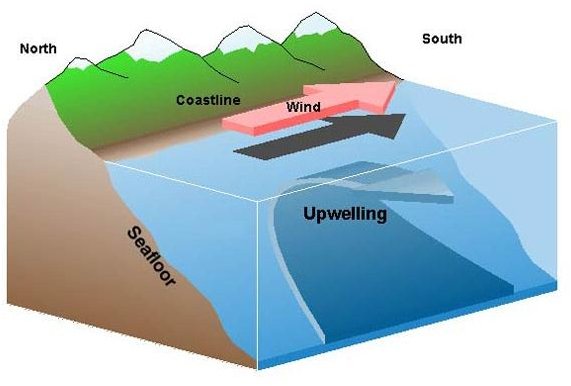
In areas that experience strong offshore or cross-shore winds, the surface waters are displaced, and are replenished with nutrient rich waters from the ocean depths. Areas that experience upwelling of cold nutrient-rich water, such as the Arctic, Antarctic, and the west coasts of Africa and America, also experience high productivity, often resulting in dense blooms of phytoplankton. Following a similar trend as above, as the winds drop, an upper layer of sunlit water, rich in nutrients, allows the phytoplankton cells to multiply. As their numbers increase, the phytoplankton cells, pigmented with chlorophyll that is essential for photosynthesis, reduce the amount of light that is able to penetrate the euphotic zone, thus making the layer that they are able to actively grow in, shallower.**
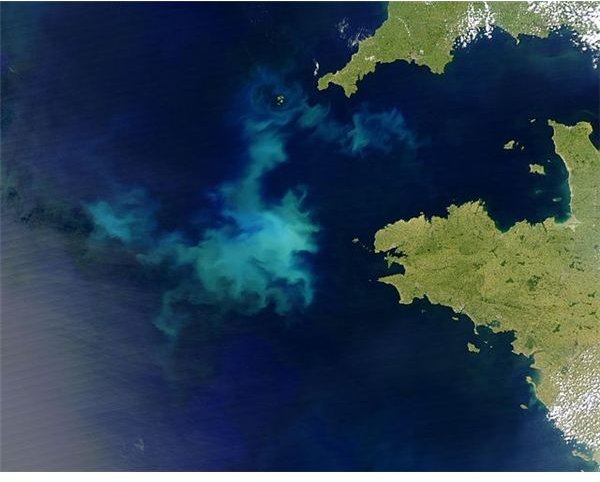
**While the bloom is at its peak, the phytoplankton are grazed on by zooplankton, which in turn are preyed on by carnivorous zooplankton, invertebrates and fish. Nutrients in the euphotic zone are depleted within a week, whereupon the remaining phytoplankton cells that have not been grazed, sink and die off due to lack of nutrients in the upper layers, or lack of light in the deeper layers where nutrients are available, allowing sunlight to penetrate to greater depths once again. This is usually followed by another upwelling event injecting nutrients into the euphotic zone to fuel a new phytoplankton bloom. This continuous stream of productivity sustains zooplankton, invertebrates, fish, and higher predators such as seabirds and sea mammals, which establish large breeding colonies around areas of upwelling as it provides abundant resources essential to successfully raise their young. These are also important areas for fisheries, providing an important source of protein for human populations around the world.
Carbon Cycling
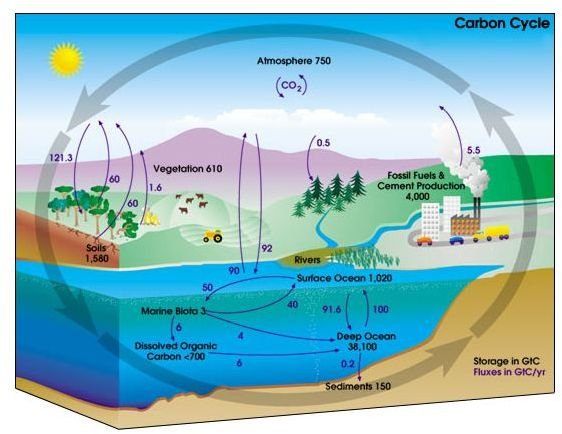
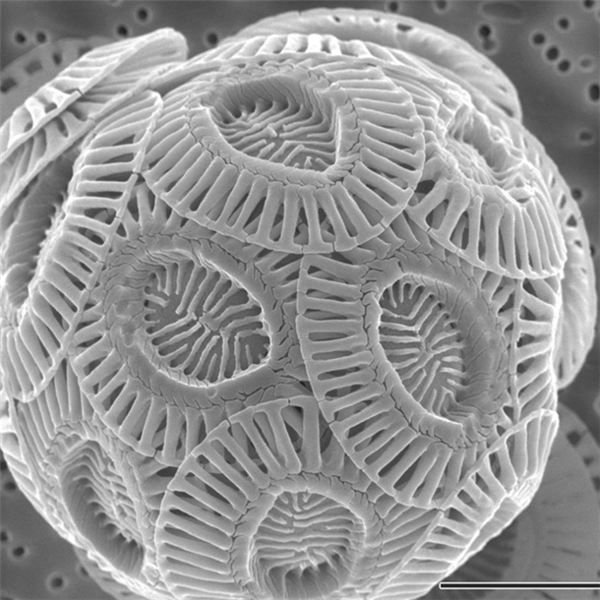
Phytoplankton use carbon dioxide in the process of photosynthesis, and because of their vast numbers, they are responsible for removing much of the carbon dioxide that enters our atmosphere through the burning of fossil fuels. In fact, these microscopic organisms remove as much carbon dioxide as all the terrestrial plants, including the rainforests. As oxygen is released as a by-product of photosynthesis, they also contribute substantially to the amount of oxygen produced globally. Furthermore, scientists from the Marine Biological Association and Plymouth Marine Laboratory in the UK and the University of North Carolina Wilmington in the US, recently discovered that certain phytoplankton species, the coccolithophores, use calcium carbonate to build elaborate internal body scales for protection, in a similar process that vertebrates use to build skeletal tissue. After assimilating carbon dioxide and calcium carbonate from the surface waters, the phytoplankton die off after nutrients that sustain them are depleted, and they sink to the sediments on the seabed. The scientists concluded that these tiny microscopic plankton are single-handedly responsible for a significant amount of carbon removal from the surface oceans, and contribute on a grand scale to the global carbon cycle.
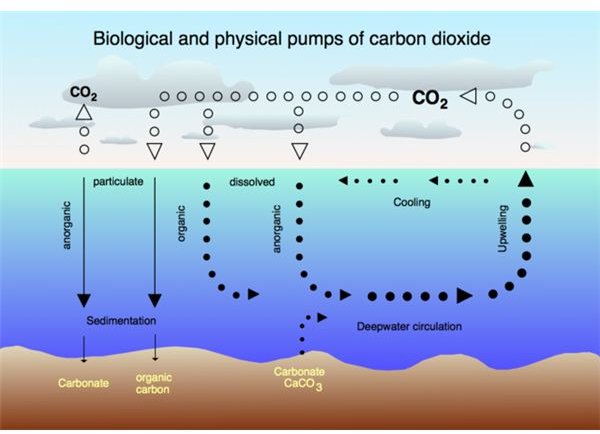
Carbon dioxide in the Earth’s atmosphere absorbs infrared radiation from the sun, and is instrumental in keeping the Earth warm. However, a dramatic increase in carbon dioxide levels in the atmosphere as a result of human activities, such as burning of fossil fuels, has resulted in global warming. Carbon dioxide moves between the sea and the atmosphere depending on the saturation levels of the surface water. Therefore, as carbon dioxide is removed from the surface water by phytoplankton during photosynthesis, it reduces the concentration of carbon dioxide in the surface waters and allows carbon dioxide to move across the water/air interface from a high concentration in the atmosphere to the sea water where concentrations are lower, until saturation is achieved. This is then made available to phytoplankton, and when conditions are favorable, a new cycle begins.
The Ocean’s Backbone
As primary producers, marine phytoplankton not only contribute extensively to productivity of our oceans, supporting an abundant array of marine life, but in the process, they also play a fundamental role in the carbon cycle, and in reducing carbon dioxide from the Earth’s atmosphere.
References
Meadows, P.S. & Campbell, J.I. An Introduction to Marine Science. 1988. Blackie & Son Ltd.
Payne, A.I.L. & Crawford, R.J.M. (eds.) Oceans of Life off Southern Africa. 1989. Vlaeberg Publishers CC.
Public Library of Science (2011, June 22). Surprises from the ocean: Marine plankton and ocean pH. ScienceDaily. Retrieved July 8, 2011, from https://www.sciencedaily.com/releases/2011/06/110621173519.html
Image Credits
Phytoplankton Diatoms: By Prof. Gordon T. Taylor, Stony Brook University (NOAA Corps Collection) [Public domain], via Wikimedia Commons
Plankton: By pt::en:User:Kils página pessoal.Manuel Anastácio at pt.wikipedia [GFDL (www.gnu.org/copyleft/fdl.html) or CC-BY-SA-3.0 (www.creativecommons.org/licenses/by-sa/3.0/)], from Wikimedia Commons
Whale Shark Feeding on Plankton: By Jaontiveros [GFDL (www.gnu.org/copyleft/fdl.html) or CC-BY-SA-3.0-2.5-2.0-1.0 (www.creativecommons.org/licenses/by-sa/3.0)], via Wikimedia Commons
Nutrient Cycle: By Hannes Grobe: Alfred Wegener Institute for Polar and Marine Research, Bremerhaven, Germany [CC-BY-SA-2.5 (www.creativecommons.org/licenses/by-sa/2.5)], via Wikimedia Commons
Algal Bloom: By Credit: Jacques Descloitres, MODIS Rapid Response Team, NASA/GSFC[Public Domain], via Wikimedia Commons
Upwelling: By modified by D. Reed from image by J. Wallace and S. Vogel, El Niño and Climate Prediction. Image courtesy of Sanctuary Quest 2002, NOAA/OER [Public domain], via Wikimedia Commons
Carbon Cycle: By User Kevin Saff on en.wikipedia [Public Domain], via Wikimedia Commons
Coccolithophore with internal calcium carbonate plates: By Alison R. Taylor (University of North Carolina Wilmington Microscopy Facility) [CC-BY-2.5 (www.creativecommons.org/licenses/by/2.5)], via Wikimedia Commons
CO2 Pump: By Hannes Grobe 21:52, 12 August 2006 (UTC), Alfred Wegener Institute for Polar and Marine Research, Bremerhaven, Germany [CC-BY-SA-2.5 (www.creativecommons.org/licenses/by-sa/2.5)], via Wikimedia Commons
